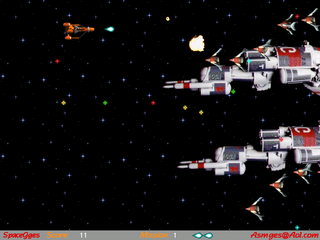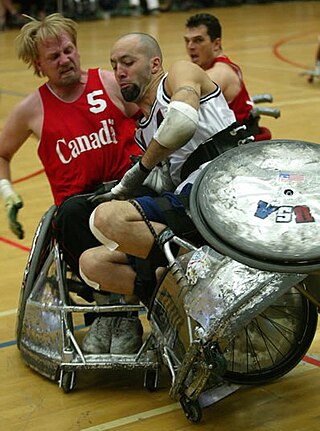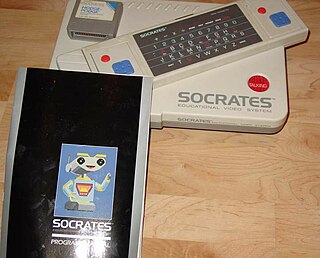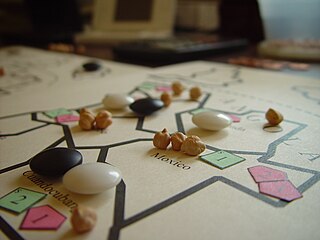
Board games are tabletop games that typically use pieces. These pieces are moved or placed on a pre-marked board and often include elements of table, card, role-playing, and miniatures games as well.

The tertiary sector of the economy, generally known as the service sector, is the third of the three economic sectors in the three-sector model. The others are the primary sector and the secondary sector (manufacturing).

A strategy game or strategic game is a game in which the players' uncoerced, and often autonomous, decision-making skills have a high significance in determining the outcome. Almost all strategy games require internal decision tree-style thinking, and typically very high situational awareness.

In organology, the study of musical instruments, many methods of classifying instruments exist. Most methods are specific to a particular cultural group and were developed to serve that culture's musical needs. Culture-based classification methods sometimes break down when applied outside that culture. For example, a classification based on instrument use may fail when applied to another culture that uses the same instrument differently.

A video game genre is an informal classification of a video game based on how it is played rather than visual or narrative elements. This is independent of setting, unlike works of fiction that are expressed through other media, such as films or books. For example, a shooter game is still a shooter game, regardless of where or when it takes place. A specific game's genre is open to subjective interpretation. An individual game may belong to several genres at once.

Wheelchair rugby is a team sport for athletes with a disability. It is practiced in over twenty-five countries around the world and is a summer Paralympic sport.

The coach in ice hockey is the person responsible for directing the team during games and practices, prepares strategy and decides which players will participate in games.

Twitch gameplay is a type of video gameplay scenario that tests a player's response time. Action games such as shooters, sports, multiplayer online battle arena, and fighting games often contain elements of twitch gameplay. For example, first-person shooters such as Counter-Strike and Call of Duty require quick reaction times for the players to shoot enemies, and fighting games such as Street Fighter and Mortal Kombat require quick reaction times to attack or counter an opponent. Other video game genres may also involve twitch gameplay. For example, the puzzle video game Tetris gradually speeds up as the player makes progress.
The following outline is provided as an overview of and topical guide to games and gaming:

Chaos League is a fantasy-based sports management game developed by Cyanide Studios and published by Digital Jesters. It was released in Europe on 8 August 2004 and later in North America on 8 March 2005. The game is a spin on American football, the violence of the Medieval football with no rules and rugby-style of sports yet set in a fantasy world with teams being made up of fantasy races such as dwarves, elves, orcs and undead, along with the use of magic and other fictional elements during a "match". The tone of the game is satirical with comedic color commentary and adverts for fictional in-game universe products. An official expansion was later released in 2005 bundled with the original, titled Chaos League: Sudden Death that added new features and gameplay tweaks.

An educational video game is a video game that provides learning or training value to the player. Edutainment describes an intentional merger of video games and educational software into a single product. In the narrower sense used here, the term describes educational software which is primarily about entertainment, but tends to educate as well and sells itself partly under the educational umbrella. Normally software of this kind is not structured towards school curricula and does not involve educational advisors.

A video game content rating system is a system used for the classification of video games based on suitability for target audiences. Most of these systems are associated with and/or sponsored by a government, and are sometimes part of the local motion picture rating system. The utility of such ratings has been called into question by studies that publish findings such as 90% of teenagers claim that their parents "never" check the ratings before allowing them to rent or buy video games, and as such, calls have been made to "fix" the existing rating systems. Video game content rating systems can be used as the basis for laws that cover the sales of video games to minors, such as in Australia. Rating checking and approval is part of the game localization when they are being prepared for their distribution in other countries or locales. These rating systems have also been used to voluntarily restrict sales of certain video games by stores, such as the German retailer Galeria Kaufhof's removal of all video games rated 18+ by the USK following the Winnenden school shooting.

Play is a range of intrinsically motivated activities done for recreational pleasure and enjoyment. Play is commonly associated with children and juvenile-level activities, but may be engaged in at any life stage, and among other higher-functioning animals as well, most notably mammals and birds.

A game is a structured type of play, usually undertaken for entertainment or fun, and sometimes used as an educational tool. Many games are also considered to be work or art.
Nonviolent video games are video games characterized by little or no violence. As the term is vague, game designers, developers, and marketers that describe themselves as non-violent video game makers, as well as certain reviewers and members of the non-violent gaming community, often employ it to describe games with comparatively little or no violence. The definition has been applied flexibly to games in such purposive genres as the Christian video game. However, a number of games at the fringe of the "non-violence" label can only be viewed as objectively violent.
Perceptual learning is learning better perception skills such as differentiating two musical tones from one another or categorizations of spatial and temporal patterns relevant to real-world expertise. Examples of this may include reading, seeing relations among chess pieces, and knowing whether or not an X-ray image shows a tumor.
The Australian Classification Board is an Australian government statutory body responsible for the classification and censorship of films, video games and publications for exhibition, sale or hire in Australia. The ACB was established in 1970 and was once part of the Office of Film and Literature Classification (OFLC), which was dissolved in 2006. The Department of Communications and the Arts provided administrative support to the ACB from 2006 until 2020, when it was merged into the 'mega department' of the Department of Infrastructure, Transport, Regional Development and Communications. Decisions made by the ACB may be reviewed by the Australian Classification Review Board. The ACB now operates under the Commonwealth Classification Act 1995. The ACB is made up of a director, a deputy director, and three other board members, appointed by the government for three- or four-year terms, and temporary board members. The ACB is located in Sydney.
This is a non-comprehensive list that includes terms used in video games and the video game industry, as well as slang used by players.

Game design is the process of creating and shaping the mechanics, systems and rules of a game. Games can be created for entertainment, education, exercise or experimental purposes. Additionally, elements and principles of game design can be applied to other interactions, in the form of gamification. Game designer and developer Robert Zubek defines game design by breaking it down into its elements, which he says are the following:














